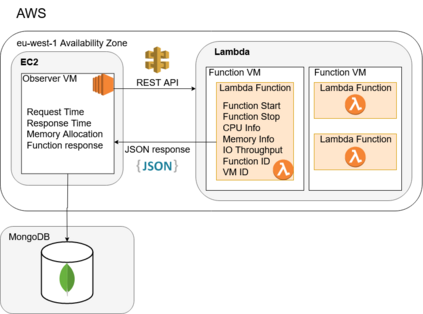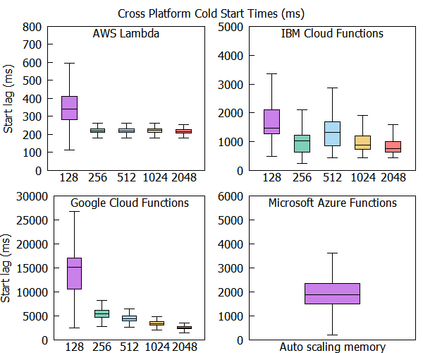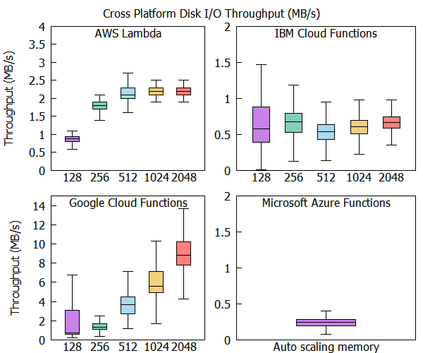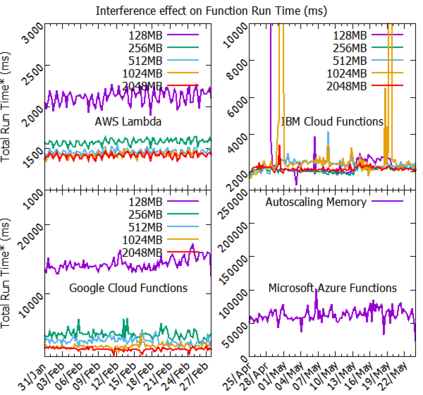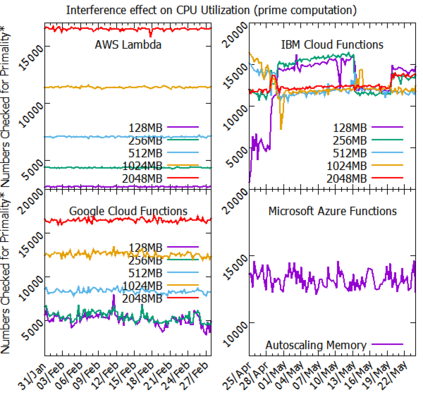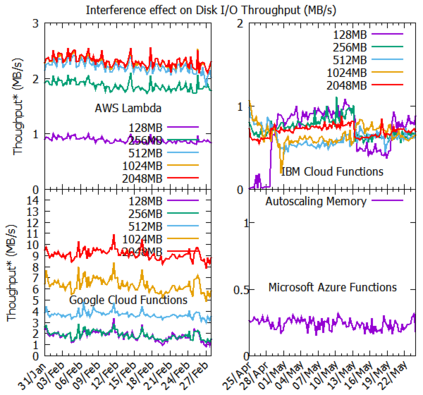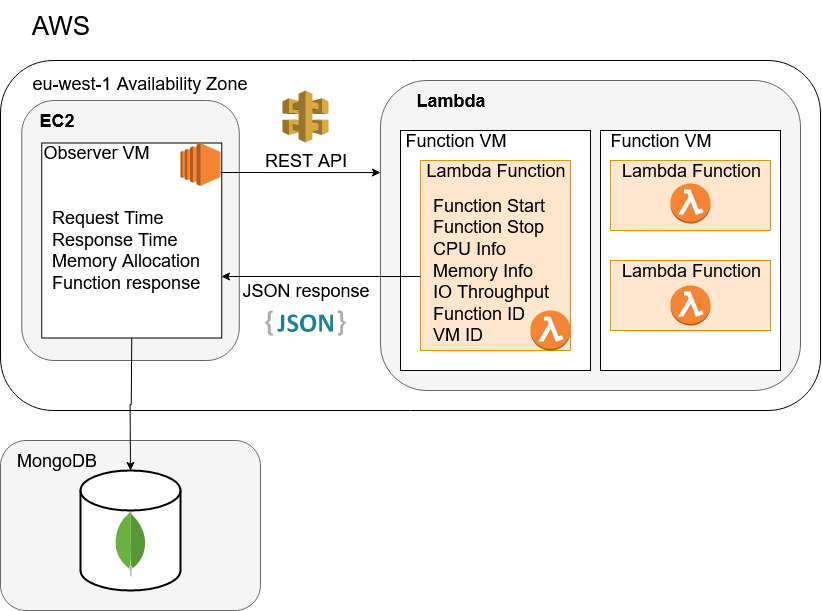Serverless computing offers an event driven pay-as-you-go framework for application development. A key selling point is the concept of no back-end server management, allowing developers to focus on application functionality. This is achieved through severe abstraction of the underlying architecture the functions run on. We examine the underlying architecture and report on the performance of serverless functions and how they are effected by certain factors such as memory allocation and interference caused by load induced by other users on the platform. Specifically, we focus on the serverless offerings of the four largest platforms; AWS Lambda, Google Cloud Functions, Microsoft Azure Functions and IBM Cloud Functions}. In this paper, we observe and contrast between these platforms in their approach to the common issue of "cold starts", we devise a means to unveil the underlying architecture serverless functions execute on and we investigate the effects of interference from load on the platform over the time span of one month.
翻译:无服务器计算为应用程序开发提供了一个由事件驱动的现收现付框架。 一个关键的销售点是没有后端服务器管理的概念, 允许开发者关注应用功能。 这是通过对运行功能所运行的基本架构进行严格的抽象化来实现的。 我们检查了基础架构, 并报告了无服务器功能的性能, 以及这些功能是如何因某些因素而起作用的, 比如记忆分配和由平台上其他用户的载荷引起的干扰。 具体地说, 我们关注四个最大平台的无服务器提供; AWS Lambda, Google Cloud Conference, 微软 Azure Concess and IBM Cloud Conference 。 在本文中, 我们观察了这些平台在应对“ 冷点启动” 共同问题的方法中之间的对比。 我们设计了一种工具来揭开基础架构无服务器功能在平台上执行的功能, 并且我们调查在一个月的时间里对平台上装载的干扰的影响。

